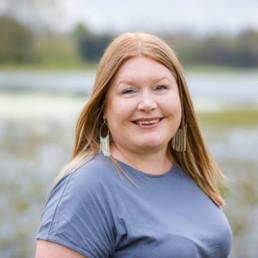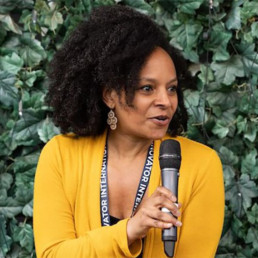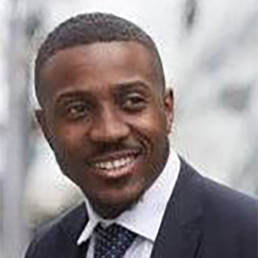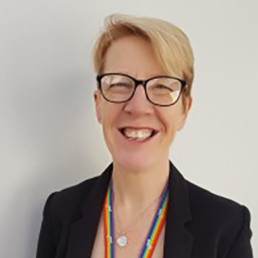Inclusive Recruitment: 20 Tips to Consider

Written by Hannah Wilson
Founder of Diverse Educators
‘Diversifying Recruitment’ and ‘Inclusive Recruitment’ are two terms that we often hear being mentioned frequently in education circles, but what is the difference in approach?
Diverse or diversifying suggests the focus is on finding diverse candidates. Inclusive or ‘inclusifying’ (phrase coined by Professor Paul Miller which we have adopted) suggests the focus is instead on including diverse candidates. A subtle and nuanced difference which makes the commitment more authentic and meaningful for all parties.
As fans of Simon Sinek’s ‘Golden Circle’ from his TED Talk: ‘Start With Why’, we would suggest that you start in your thinking and in your discussions as an educational employer, by using the model (Golden Circle = Why > How > What) to map out and align the purpose of recruiting differently.
Example 1:
- Why do we want to diversify our staff body?
- How diverse is our community and how does this compare to our various stakeholder groups?
- What impact/ legacy are we striving for by diversifying our staff?
Example 2:
- Why do we want to make our recruitment process more inclusive?
- How inclusive are our existing policies, processes and practices?
- What is the impact of a more inclusive approach to our recruitment and to our workplace?
The clarity of understanding what we are trying to change and why we are trying to change it, is an important starting point in transforming how we do things. Moreover, becoming more conscious, confident and competent in identifying and removing/ reducing existing barriers facing candidates in the recruitment process is an ongoing training priority.
A shared understanding, a shared language and a shared approach will lead to a greater consistency in experience for all.
Some key language to consider and explore:
- ‘Unconscious bias’ – have we discussed this in advance of starting a recruitment process and have key stakeholders had training?
- ‘Glass ceiling’ – are we aware of where this sits above the women in education in the system and in our own organisation?
- ‘Concrete ceiling’ – are we aware of where this sits about the people of colour in education in the system and in our own organisation?
Moreover, have we discussed, are we values-aligned and do we have a strategic approach when it comes to topics such as flexible working and the pay gap?
We get asked a lot to support schools, colleges and trusts in their approach to recruitment, but the request is often too late in the process to make a real difference and to make changes meaningful. There are some quick wins you can make in the short term to create a more inclusive recruitment process and experience, but really this needs to be a medium to long term project and we need to be planning for Summer 2025 and Autumn 2025 activities to get us better prepared for the Spring 2026 recruitment.
Here are 20 tips to reflect on and discuss with colleagues:
Tip 1: Review the JD & PS – particularly look at what is down as being ‘desirable’ v ‘essential’ as some people will not apply if they do not meet all of the criteria. We are creating false barriers e.g. you must have the NASENCO or NPQH award to apply for this job is incorrect – they can be working towards it or start it once appointed.
Tip 2: Review the Job Advert – screen the wording for bias and especially review any gendered language. Some language choices will suggest only a certain type of candidate should apply e.g. for headship a leader ‘with gravitas’ might lead to more male candidates applying.
Tip 3: Articulate your DEIB Commitment – consider where in the initial documentation would a candidate know that you are on a DEIB journey and truly committed to change as an organisation. Do you have a DEIB statement that can be lifted and included? A policy and/ or a DEIB action plan that can be hyperlinked?
Tip 4: Share your Commitment to Flexible Working – research shows us that by mentioning an openness to flexible working you get an increase in applicants. Since the Flexible Working Bill was passed the system has had to consider flexible working as a recruitment tool as well as a retention tool. Make it explicit from the beginning of the process what might be possible so candidates do not waste your time and you do not waste their time either!
Tip 5: Consider where to Advertise – if we keep doing the same we will keep getting the same. Some Jobs Boards are very expensive and draw a certain audience. Diversifying where you are advertising can also lead to you finding more diverse candidates. E.g. for governance you can post adverts in special interest Linkedin groups and networks such as Black Governors Network.
Tip 6: Consider who is Sharing the Advert and where / to who – recruitment needs to become a team sport and not just the work of HR. If your staff are outward facing and are on socials, ask them to share opportunities with their networks. Push it beyond the immediate network around the organisation to find people beyond that.
Tip 7: Review the Application Form – you might already be doing all of the above and wondering why it is not working, but have you looked at the fields the candidate has to complete at application level and the information they have to read as often forms are out of date and undermine the DEIB work that is happening e.g. asking a question like What is your gender? With binary answers like M/F. How would someone trans or non-binary complete this question? How might this put off trans allies from applying too?
Tip 8: Review your ‘Shop Window’ – your organisation’s website and your social media accounts also need reviewing and updating so everything is harmonised. If you are saying in the call to action you are interested in hearing from diverse candidates who reflect the diversity of the local community, but your website imagery does not reflect this it creates dissonance. If the person running the social media accounts has not been briefed and is only amplifying white, male thought leaders and people who share exclusionary content online, this will contradict the DEIB commitment you have articulated and this will lead to further self deselection.
Tip 9: Create a ‘Blank’ Selection Process – lots of organisations pride themselves on running ‘blind’ recruitment processes. Consider how ableist this language is and how it might undermine your commitment to DEIB. Is there another way of sharing what you are doing to try to remove bias in the process from blanking out names, race, age, salaries and institutions candidates have worked/ studied at?
Tip 10: Diversify who is Involved in the Long and Short Listing Process – bias creeps in as soon as applicants start arriving. Different people reviewing and handling the applications will have their own biases around spelling, punctuation and grammar, around font choice and formatting, around language choices before you even start digging into the details. Consider who is involved in creating and applying the selection criteria and how you score the application.
Tip 11: Articulate in the Invitation to Interview what Support is Available – instead of waiting for diversity to wave at you and say ‘hey, I am different and need this from you…’ consider leading with what you can offer as adjustments and support, and share this with all candidates. E.g. On the day you will have access to allocated parking, a lift, a quiet room, a prayer room… we serve Halal food in our school kitchen. People will feel more comfortable confirming what they need to thrive at the interview, but this will also show all candidates that you are fully committed to inclusion.
Tip 12: Send out Interview Questions out in Advance – many institutions are now sending questions out in advance to support neurodivergent applicants with processing time. But this approach also benefits other candidates including those who are less confident, introverted or who have had some time out of the system. Everyone will perform better! There are concerns that people will cheat and use ChatGTP to craft responses but we will be able to identify a contrived response and interrogate further.
Tip 13: Create an Accessible and Inclusive Interview Experience – ensure the interview format, tasks and briefing documents are accessible for all candidates, thus removing any barriers. Build in a task or a question to check for values alignment to your organisational commitment to DEIB. Values tasks can be scenario-based but can also be sent out in advance to reflect on and prepare as a pre-task to share at the interview.
Tip 14: Consider all of the Candidate Touchstones – curate the range of people that the candidates will interact with at each point of the process from ringing up to book a visit, coming for a pre-interview tour, to the day itself and communications from the HR lead before, during and after. Where are the opportunities for candidates to see themselves and other diverse identities in the process?
Tip 15: Be Authentic and Honest, Avoid Being Performative – we get regular feedback from candidates that they appreciate transparency from prospective employers. If an organisation can identify and articulate their gaps/ shortcomings this acknowledges that they are aware of their gaps and they want to do better in representing the diversity of their community in the diversity of the staff body. We are also aware that some organisations use stock images of diverse staff and center a couple of children from marginalised identities in all of their marketing materials.
Tip 16: Close the Training Gaps for HR, SLT, Governors and Administrative Staff – creating a more inclusive approach to recruitment to diversify the staff, takes a lot of time and energy. This starts with identifying the training needs of all of the stakeholders potentially involved in recruitment. The DEIB training needs to be scheduled, in advance and form part of an ongoing commitment to upskilling all managers and leaders in HR matters to bring the people strategy to life. We know that we need Safer Recruitment training in place, wrap the DEIB and unconscious bias training around it.
Tip 17: Plan for Induction – finding and securing candidates is the start of the journey of onboarding new staff into your team to ensure they are included. As new staff are oriented into your ways of working, ensure that DEIB is a golden thread. Have a standardised DEIB session for line managers to deliver to all new staff at the start of each term, or get your DEIB lead to deliver it or pre-record it so everyone gets a consistent message.
Tip 18: Outline Development Opportunities – see the vacancy as an opportunity to showcase how you develop and nurture your staff. Find an opportunity at interview or in the interview documentation to share the talent management strategy and what CPD is on offer. This will inspire and motivate staff, and affirm that you invest in your staff including offering coaching and mentoring to empower them to have impact in their roles.
Tip 19: Focus on Retention as much as Recruitment – efforts are often focused on recruitment, but we also need to pay attention to staff retention. We need to regularly scrutinise and share our attrition data, identifying patterns and trends. If we are losing our mothers, how family-friendly is our school? If we are losing our neurodivergent staff, how neuro-inclusive are we? Exit interviews are too late to find out what is going on and what is going wrong, create feedback loops to listen and learn from staff surveys/ staff voice around levels of inclusion and belonging to make regular tweaks to the approach.
Tip 20: Give and Get Feedback from all of the Candidates – we hear from so many candidates who are not offered feedback following an interview, or who receive feedback that is not specific, constructive nor helpful for their development. Build into the process how feedback will be harvested and cascaded, see this as part of the value-add to all candidates but also as an opportunity to show your commitment to staff development. Also ask for feedback, be open to what worked and did not work to consider changes in future interview activities.
Our biggest advice is plan ahead and design for inclusion. These tips can all feed into a longer term piece of strategic work around your talent management process and people strategy. A strategic approach to inclusive recruitment and diversifying the workforce means we are focused on being proactive, preemptive and preventive instead of being reactive.
We have worked with some trusts where the training starts in May, the summer term is spent mapping milestones out with key stakeholders. The HR and recruitment team spend the summer period whilst schools are closed to review and update documentation. Then in the Autumn updates can be shared through meetings and training sessions for all stakeholders involved in recruitment. This means that our processes, policies, practices and people will be ready for the big push on recruitment from the Winter/ early Spring.
Our call to action is to be brave and to commit to doing things differently. This might include:
- Becoming more outward-facing as an organisation
- Creating a campaign about what it is like to work/ why you should consider working at the organisation
- Articulating your Employer’s Promise in multiple ways on your socials
- Growing the network around the organisation
- Holding recruitment days and open events for the organisation
- Hosting events and training to create a buzz around the organisation
- Keeping a pipeline of talent warm and informed about opportunities
For more information check out the following support and resources:
- Our Inclusive Recruitment Toolkit
- Our Inclusive Recruitment Training
- Our session on Inclusive Recruitment at the ASCL national conference
- Our #DiverseEd Jobs Board in partnership with Teacheroo
If you are an organisation who has already committed to using our #DiverseEd Jobs Board throughout 2025, we will be in touch regarding a free webinar to support you all in your inclusive recruitment efforts.
How we Made our School More Inclusive

Written by Kate Williamson
Kate (she/her) is a year 3 class teacher at Darras Hall Primary School. She founded and now leads the Diversity Council at the school where students from reception to year 6 come together to celebrate, support and even make recommendations for how the school can be more inclusive for all pupils.
Darras Hall Primary in Northumberland, England, won the Primary School Diversity Award from Just Like Us earlier this year. In the past two years, the school has been on a journey to transform its curriculum and provision to make it an inclusive and nurturing environment for children to celebrate their individuality and diversity. I’m Kate Williamson, Year 3 teacher and Diversity Council Lead, and I wanted to tell you how we used and incorporated Pop’n’Olly resources to support this.
Two years ago, at the beginning of our journey, we identified three main areas that we wanted to develop:
- Our staff’s knowledge
- Our children’s knowledge
- Our parents’ knowledge
Initially, we audited what the staff at Darras Hall already knew about the Equality Act and how to support diversity and inclusion. We also had very open and honest discussions about what training and support staff needed in order to feel more comfortable tackling issues regarding inequality, discrimination and prejudice and consequently, support our children and families.
The Pop’n’Olly resources, under the Teacher Training tab, provided a great starting point for having these discussions, making staff aware of negative/anti-LGBT+ language and introducing the Equality Act. They can be used for whole-staff training or you can nominate one member of your staff team to be your Diversity Champion and relay information to others. In our school, we opted to have two champions, in different key stages, so staff felt as though they could come and ask questions without fear or judgement.
We then created our Diversity Council. Children met every week where they discussed issues that had arisen, planned whole school assemblies around diverse topics and created helpful videos that were shared via the school’s social media. We used videos from the Pop’n’Olly YouTube channel to introduce big topics such as discrimination, inequality and gender expression in a child-appropriate way. Finally, the children took part in live assemblies and workshops to equip them with the knowledge and skills needed to support their peers.
More recently in our Diversity Council meetings, we have used the new book ‘Have You Ever Seen A Normal?’ to promote discussion around celebrating diversity and our differences, as well as introducing neurodivergent thinking (a short video on how we have used this text for children from Year 1 to Year 6 is coming soon!)
Books are a great way of opening up discussions and are a valuable resource when introducing topics to children. In our school library, we have an area that is dedicated to celebrating diversity and introducing the Protected Characteristics covered by The Equality Act 2010. These books are labelled with a rainbow sticker and we encourage children to take them home to share with parents and promote positive discussions around LGBT+ and other topics. The Pop’n’Olly books are fantastic at opening up these discussions and allowing children to see different people being represented.
We introduced Class Heroes where each class selected someone who they felt celebrated and overcame challenges and inspired them to do the same. This allowed children to learn about other individuals outside the parameters of the curriculum. Classes made posters and displayed them on their doors for other children to read and every few weeks a class created a whole school assembly about their individual. The Pop’n’Olly posters are a great starting point for choosing your hero!
Then, we included the parents in our work and the responses were only positive and supportive. Pop’n’Olly has a really useful free resource called ‘Discussions with Parents’ that details themes, the legal framework and the impact it has on children’s mental health which can help you when having those tricky conversations. Including some of these in your weekly newsletters or updating parents through your school’s social media can help make this part of a wider school ethos.
The impact this work has had on our children and families can be recognised through their ability to challenge, support and celebrate each other; they are able to confidently articulate their rights and call out negative behaviours that challenge our inclusive ethos. I attribute this to the work we have done as a school around Protected Characteristics and ensuring everyone has the right to belong. All staff have received training around the Protected Characteristics and inclusive language so are empowered to spot, report and support students. There is a shared responsibility, between staff and students, to maintain our ethos and that every individual at Darras Hall Primary School has the right to be their authentic self.
OUR TOP TIPS:
- Ensure that staff have been trained and everyone is on board with the work.
- Form a Diversity Council to ensure children’s voices are heard.
- Use books (marked with a rainbow sticker) to introduce the Protected Characteristics.
- Inspire children with Class Heroes who have overcome challenges.
- Involve parents through regular updates, newsletters and celebrations.
An Educator’s Introduction to Culturally Responsive Teaching

Written by Eleanor Hecks
Eleanor Hecks is a writer who is passionate about helping businesses create inclusive and diverse spaces. She serves as the Editor in Chief of Designerly Magazine.
Today’s classrooms are more diverse than ever before. Students come from various backgrounds, whether cultural, linguistic or socioeconomic. They bring unique perspectives and experiences.
As the educator, your responsibility now extends beyond delivering the curriculum – it also involves fostering an inclusive environment where all your students feel valued, heard and empowered to achieve their true potential. Culturally responsive teaching is an essential solution.
What Is Culturally Responsive Teaching?
CTR is a research-based pedagogical approach that connects students’ cultural backgrounds with their learning. It focuses on recognizing the assets students can bring into the classroom instead of focusing on perceived shortcomings. CRT helps students engage in deeper learning and develop higher-level academic skills by making these connections.
Theories such as Lev Vygotsky’s Zone of Proximal Development and Jerome Bruner’s Scaffolding underpin CRT’s emphasis on building upon students’ knowledge. These approaches support the importance of connecting new learning to an existing schema, which is central to CRT.
Unlike teacher-centered traditional models, CRT emphasises the student. It integrates diverse cultural aspects into the instruction, tailoring the education process to the student’s needs. Since learning is meaningful and engaging, it promotes a sense of belonging, even among students belonging to minority or marginalized groups.
Why Is Culturally Responsive Teaching Necessary?
Implementing CRT is becoming increasingly necessary in today’s educational landscape. The traditional one-size-fits-all approach no longer addresses the realities of today’s classrooms. Here’s why CRT is growing in demand.
Addresses Diversity in Classrooms
Student ethnicity is growing. A 2022 summary released by the Department of Education showed that the student population comprises 6.5% Asian pupils, 6% mixed or black pupils and 2% belonging to other ethnic groups. These statistics reflect the growing diversity of classrooms in the UK. Standardised teaching methods fail to cater to this diversity, which leaves minority students disengaged and underrepresented.
Strengthens Student Engagement
Students are more likely to connect with and retain information when they see their identities reflected in the curriculum. CRT helps make learning more relevant to their lived experiences.
Promotes Equity and Inclusion
CRT seeks to reduce disparities in education by creating equitable learning environments that recognise and celebrate every student’s identity. Inclusive strategies benefit minority students and open opportunities for the majority to learn as the two groups participate in intercultural conversations and learn about each other’s cultures.
Prepares Students for a Globalised World
There is a direct, positive correlation between cultural and emotional intelligence. CRT equips students with the skills to understand and respect other people’s viewpoints.
Students who grasp that there are different cultures and beliefs grow into adults whose emotional intelligence (EI) makes them compassionate, open-minded and culturally sensitive. This emotional intelligence is responsible for between 27% and 45% of job success as a whole, emphasizing the importance of supporting students’ EI before they enter the workforce.
Develops Critical Thinking
Incorporating multicultural perspectives in classrooms challenges students to think critically about social issues, providing them additional context to understand the wide world around them.
How to Apply Culturally Responsive Teaching in Your Classroom
Adopting culturally responsive teaching doesn’t require completely overhauling your current working methods. Small, intentional changes can create significant impacts. Here are practical steps to integrate CRT into your teaching practices.
- Activate students’ knowledge by connecting with their cultural or personal experiences.
- Tie your lessons to real-world events or contemporary issues so students see their value beyond the classroom.
- Ensure your curriculum and resources reflect diverse authors and cultures.
- Consider your classroom’s physical and visual setup to be more inclusive of minority groups.
- Build strong student-teacher relationships and learn more about your students’ interests, cultural backgrounds and identities.
- Create opportunities for group projects and assignments.
- Attend workshops, read research and collaborate with colleagues to refine your pedagogic practices.
The Impact of Culturally Responsive Teaching
Culturally responsive teaching can transform both students and teachers. For your pupils, it strengthens their sense of identity, boosts academic achievement and allows for deeper engagement with their learning experience. For educators, it provides an opportunity to make a meaningful impact in their students’ lives as they contribute to a more equitable education system. Embracing CRT enables students to prepare for the multicultural world beyond their classrooms.
Making mutineers? Why building digital citizenship in the data age is crucial for educators promoting diversity, equity and inclusion

Written by Jonny Tridgell
Jonny began his career as a secondary school teacher in 2009 and has since been a head of sixth form, head of department and lead practitioner for EDI. He has also worked in teacher education as a mentor, curriculum tutor and general tutor on the University of Oxford PGCE. He completed his MSc in Education (Digital and Social Change) at Oxford in 2024. He is currently working as Equality, Diversity & Inclusion Data and Insights Officer at Jesus College, Oxford, alongside roles as a teacher, teacher educator and researcher.
Imagine two sailors. The first navigates his life on ship with diligence and skill, but little concern for how this affects others. His approach to the sea is entirely instrumentalist. The second sailor takes a different approach; she knows her job as well as the first, but she is awake to the power structures that surround her, the web of exploitation and trade that underpin her work. She is committed to making change and serving justice, by mutiny if she must.
Here, following Schober (2014), the sea stands in for the digital world. Our lives are increasingly lived digitally, with our actions and interactions transformed into data that is tracked, sold and mined for the benefit of multinational corporations. Many of us take an instrumentalist approach to this, ignorant (by choice or by indoctrination) of the consequences this process can have, especially for those often rendered invisible by society. This includes those marginalised in our communities and those in the Global South, who bear the brunt of exploitative extraction processes that can involve appalling human rights abuses and untold exacerbation of the climate crisis. Studies have shown that datafication negatively affects those who are already harmed by society (e.g. Zuboff’s 2019 Surveillance Capitalism; Eubanks’ 2018 Automating Inequality) and there are concerns about how schools collect and use data, as well as who funds and designs the programmes we use in our classrooms.
How do we encourage students to become more like the second sailor? There is a great deal of excitement about building digital skills, including in relation to AI, but we need greater engagement with what it means to use the digital responsibly. Shannon Vallor’s excellent Technomoral Virtues (2016) applies virtue ethics to existing online and this could lay groundwork for how we teach young people to be digital citizens, preparing them to make informed choices about the technology they use and how they treat others in the digital sphere. This is not about frightening young people or turning them off technology, but rather teaching them to understand the responsibility they bear and that what they do online has real, physical consequences. Vallor notes the need for us to achieve a new “practical wisdom” that includes an understanding of the digital. This is also where the link to citizenship is crucial – the online world is vast and interconnected and we must encourage young people to see themselves as members of an international community, with attendant responsibilities.
What does this look like in reality? Research is increasingly critical of one-off educational experiences like assemblies or drop days, given that these often have limited impact over time. Rather, it is crucial that we as teachers weave this digital citizenship education into our students’ lives. This might be by developing checks before we recommend or adopt new technology (e.g. asking who funds this and what data will be gathered); this could happen at the level of senior leaders or in our own classrooms. We might model the responsible and careful use of search engines and AI, noting the ways that both can reproduce inequality (as shown harrowingly by Noble’s 2018 study The Algorithms of Oppression). This might also include teaching explicitly about the challenges and benefits of digitalisation and datafication in our lessons, perhaps with an RE lesson considering what it means to be human or a mathematics lesson on how statistics are used online. Lessons can be learned from work done on decolonising curriculum here, as well as the ways in which colleagues incorporate other duties like SMSC, CEIAG and fundamental British values. Digital citizenship can and should become part of the goal of schools in the UK, alongside the more instrumentalist approach to digital skills being promoted so widely already.
As life becomes increasingly online – as we all become sailors on this wild ocean – it is crucial that we are preparing our students to look out for those who are often already marginalised or forgotten, driven out of sight and therefore out of mind. No one sailor can do this on her own – she needs a teacher.
If you’re interested in hearing more about Jonny’s work or how to incorporate digital citizenship into your teaching, his MSc thesis “Making Mutineers: Reimagining religious education for the promotion of virtuous digital citizenship” can be read here. You can also sign up to the in-person programme Jonny is running with the University of Oxford’s Bodleian Libraries here.
Empowerment, Inclusion, and Storytelling: A New Approach to History Education

Written by Dana Saxon
Dana Saxon is an educator, writer, and family historian who seeks to address global inequities in education. Her organisation, Ancestors unKnown, changes the way pupils learn about history, themselves, and the world around them, providing opportunities for them to learn about marginalised histories and stories from their own communities.
Traditional history education can sometimes feel stale and uninspired – a series of dates and old white men who seem to have little or no relevance to the lives of today’s children. This approach, heavily focused on Eurocentric perspectives and the accomplishments of a select few, can leave many students feeling excluded and disconnected from the past.
But, as even Ofsted explained in their 2023 report about history education, “Every pupil is entitled to encounters with the richness of the past and the complexity of historical enquiry”.
A New Approach: Student Stories at the Centre
What if we reframed history education? What if we centred the learning experience around the unique stories of each child?
This is the vision driving Ancestors unKnown, a unique approach to history education that empowers young people by weaving their personal narratives into the larger context of local and global history.
At the heart of our methodology lies the belief that every child’s story is a valuable piece of the historical puzzle. We encourage students to explore their own family and community histories through oral histories and archival research. By interviewing elders, collecting family artefacts, and delving into local archives, children uncover the unique stories of their ancestors and the elders in their community, including their struggles, their triumphs, and their contributions to society.
Then, while our students are empowered to personalise historical research, we help them connect these personal narratives with the untold and often marginalised histories that have shaped our world. As a result, students learn about the contributions of diverse communities, stories about migration, struggles for social justice, and other hidden stories that lie beneath the surface of conventional historical narratives.
The Benefits of Ancestors unKnown
Our integrated approach fosters a profound sense of belonging and empowerment. When children see how their own stories connect to the larger historical narrative, they develop a deeper understanding of their place in the world. They begin to see themselves as active participants in history, not just passive observers.
Furthermore, by sharing their family histories with their classmates, children gain valuable insights into the diverse experiences and perspectives of those around them. This fosters empathy, understanding, and a greater appreciation for the people and communities around them.
With our approach, Ancestors unKnown is making history curriculum more inclusive and equitable. By centring the experiences of diverse communities and highlighting the contributions of marginalised groups, we challenge traditional narratives and create a more representative understanding of the past.
“Our community interviews were really successful!” shared a primary school teacher about their Year 5 Ancestors unKnown project.” We interviewed adults from South America, England, France, China and Nigeria! The children asked some really interesting questions and really enjoyed listening to the different family and community stories.”
Bringing Ancestors unKnown to More Classrooms
Ancestors unKnown provides schools with a toolkit and ongoing support to implement our programme during one school term for Y5 or Y6. We also offer teacher training, parent/community engagement workshops, and access to a network of local historians and storytellers as guest lecturers.
We believe that by empowering teachers, students, and their families with the tools and knowledge to uncover their own historical narratives, we can create a more inclusive and engaging learning experience for everyone.
Ready to transform history education in your school? Learn more about our programme and contact us to bring Ancestors unKnown into your classrooms.
Let’s work together to empower the next generation of historians to tell a different, more inclusive story about the past – a story that includes their ancestors.
Developing a PSHE Curriculum on Antisemitism, based on the teaching of Rabbi Lord Jonathan Sacks

Written by Rabbi Cobi Ebrahimoff
Rabbi Cobi Ebrahimoff is UK Director of Education at The Rabbi Sacks Legacy, where his primary focus is to bring the teachings of Rabbi Sacks into schools and spearhead the development of innovative educational resources.
INTRODUCTION
Within living memory of the Holocaust, after which the world vowed “never again,” antisemitism has returned.
Rabbi Lord Jonathan Sacks offers a unique approach for students to understand why antisemitism is a danger for every single member of British society. In this four part series of lessons, students will explore:
- What is antisemitism?
- The stereotypes, prejudice and discrimination that Jewish people face
- The evolution of antisemitism and how it affects Jewish people today
- How antisemitism may affect them and how to combat it
BACKGROUND TO ANTISEMITSIM
Antisemitism is complex and often contradictory, making it difficult to define. Historically, Jews were persecuted for opposing reasons – being both poor and rich, communists and capitalists, isolated and too integrated.
So, what is antisemitism? It’s not just disliking someone for being different – that’s xenophobia. And it’s not simply criticising Israel – that’s part of democratic debate. Antisemitism is far more dangerous. It’s about persecuting Jews and denying them the right to exist as Jews, with the same rights as everyone else.
Over time, antisemitism has evolved, shifting from religious persecution in the Middle Ages to racial hatred in the 19th and 20th centuries, and now, targeting Israel’s right to exist. This new antisemitism uses human rights as a guise for prejudice.
Why should this matter to all of us? Antisemitism reflects a broader inability to accept difference. History shows that hate starting with Jews never ends with Jews. It’s a warning sign of threats to freedom, humanity, and the dignity of difference – issues that concern us all. That’s why combating antisemitism is a fight we must undertake together.
The Rabbi Sacks Legacy (RSL) is proud to present a new PSHE curriculum designed to provide a comprehensive framework for educating students about the historical and contemporary aspects of antisemitism through the prism of Rabbi Sacks’ unique approach. The curriculum aims to enrich students’ understanding of moral responsibility and create a deep appreciation of social diversity.
The curriculum meets Ofsted’s requirements to promote SMSC (Spiritual, moral, social, and cultural) development and fundamental British values. Under Section 5 inspections, Ofsted will consider how British values are promoted within schools, including the importance of tackling dis- crimination. Education on antisemitism directly supports these objectives, demonstrating the school’s commitment to creating a safe and inclusive environment for all students.
COMPREHENSIVE, READY-TO-USE RESOURCES FOR TEACHERS
Designed for teachers by teachers, the RSL PSHE curriculum comes complete with all the resources needed for seamless implementation. Teachers are provided with:
- Fully developed lesson plans with clear learning objectives aligned with SMSC and Departmental requirements.
- Differentiated activities to challenge higher-ability students and support those who need additional help, ensuring inclusivity in every classroom.
- Interactive multimedia content to engage students and bring complex topics to life.
- Assessment for learning tools to measure student progress and reinforce key challenges and benefits of living in a diverse society.
- Detailed teacher not and PowerPoint presentations, making it easy to deliver high-quality lessons with confidence.
To support high-quality delivery, teachers have access to high-quality training sessions and the opportunity to book expert-led workshops, ensuring that the curriculum is not only implemented effectively but also becomes an integral part of the school’s ethos.
ELEVATE YOUR SCHOOL’S COMMITMENT TO FUNDAMENTAL BRITISH VALUES WITH THE RSL PSHE CURRICULUM
In today’s educational landscape, the responsibility of promoting fundamental British values within schools has never been more significant. The Department for Education mandates that all schools actively promote values such as democracy, the rule of law, individual liberty, mutual respect, and tolerance of those with different faiths and beliefs. These values are integral to students’ spiritual, moral, social, and cultural (SMSC) development, forming the foundation of a cohesive and inclusive society.
The RSL PSHE curriculum empowers schools to fulfil these essential requirements. Developed with the insights of Rabbi Sacks, a leading voice in fostering interfaith dialogue and understanding, this curriculum is designed to address the challenges of antisemitism while broadening students’ understanding of diversity and respect for all.
CURRICULUM ALIGNMENT WITH SMSC DEVELOPMENT AND FUNDAMENTAL BRITISH VALUES
Promoting Mutual Respect and Tolerance
At the core of the curriculum is the “dignity of difference” principle, a concept championed by Rabbi Sacks. Through this lens, students are encouraged to explore and appreciate the benefits of our diverse society. The curriculum challenges students to confront prejudice, including antisemitism, and embrace differences with dignity.
Fostering Individual Liberty
The curriculum empowers students to think critically about the world around them, promoting individual liberty by encouraging them to form opinions.
Reinforcing the values of Democracy and the Rule of Law
The curriculum highlights the importance of the rule of law in protecting individual rights and minorities. It also promotes democratic values by encouraging discussions and debates, respecting different viewpoints, and understanding the processes that uphold democracy.
Enhancing SMSC Development
Through carefully structured sessions with clear learning objectives, differentiated tasks, and comprehensive assessment opportunities, students are guided to reflect on their moral responsibilities, develop social awareness, and cultivate a deep understanding of cultural diversity.
COMMIT TO EXCELLENCE IN EDUCATION
The RSL PSHE curriculum is more than just a teaching tool. It’s a commitment to fostering a school environment where every student learns the value of respect, tolerance, and moral responsibility. By integrating this curriculum into your school’s PSHE sessions, you are meeting Ofsted’s requirements and playing a vital role in shaping a generation that values diversity and upholds the principles of a just and inclusive society.
Build bridges. Break barriers. Adopt the RSL PSHE curriculum today!
From Representation to Transformation: The Impact of Diverse Governing Boards in Schools

Written by Krystian McInnis
Krystian McInnis is a Religious Education consultant, advisor, and researcher specialising in decolonising and diversifying Religious Education. With a career that spans the public, private, and charity sectors, he brings extensive national and international experience in curriculum diversification and decolonisation. As the Co-Founder of Reimagining Education, Krystian is dedicated to creating a more inclusive and equitable educational system where everyone feels seen, heard, and that they belong.
School governing boards in the UK are entrusted with the critical task of shaping the educational experiences of both students and staff. Within their role, they have the power to influence curriculum choices, define and redefine budget allocations and set the future direction of the school or trust, all whilst ensuring robust safeguarding policies are in place. Therefore, for these decisions to be equitable, inclusive, and representative of society, there must be a concerted e=ort to foster diversity within governing bodies that are then truly representative.
In a country as richly multi-cultural as the UK, ensuring that school governing boards reflect the communities they serve is notably more important now than ever before. Unfortunately however, as the UK’s demographics shifts, the diversity in school leadership remains stagnant. I believe that it is fundamental that we ensure governing boards mirror the demographics of their school communities. In doing so, this allows for them to be better equipped in making informed, equitable, and culturally competent decisions that benefit not only their students and staff, but the local community too. Sadly however, we see too often, where governing boards fail to reflect the diversity of their student bodies, they risk the potential for policies and practices to be occasionally overlooked and the inadequate addressing of key issues surrounding cultural sensitivity, religious practices and diverse student engagement and motivation.
Why Diversity on Governing Boards Matters
It’s important to note that the significance of diverse governing boards goes beyond fair representation and rather works towards a system where we can directly challenge biases and dismantle systemic inequities within education. When boards include individuals from varied cultural, racial and socioeconomic backgrounds, they bring with them a wealth of knowledge which not only benefit individual schools but also strengthens that of the local community too. Fundamentally, leadership diversity can seek to challenges traditional ideas of governance and in doing so encourage schools to adopt more inclusive and adaptable leadership styles. With diverse leadership teams often outperforming homogenous ones in terms of innovation, empathy and policy relevance, the time has come for us to move beyond the idea that leadership is monolithic and embrace the variety of voices available (George 2022).
Moreover, with diverse boards also more likely to foster a greater sense of cultural competency, having board members and trustees from different cultural backgrounds is beneficial and often results in a better understanding to address the unique needs of students from diverse backgrounds too. Carter (2021) found that within governing bodies, cultural awareness did not just enrich a board’s discussions, it in fact had tangible impacts on policy priorities, curriculum content, and school culture.
Although research is still in its infancy, emerging findings shows that there is also a link between diverse governing boards and student success. Begum (2020) asserts that a governing board that mirrors its student body helps to creates an environment where every child feels they belong, ultimately resulting in an increase to their motivation and engagement to learning. This level of representation becomes of even more importance at the governance level, not just for students, but for sta= and the local community too. With one of the roles of school governance to have a positive impact for both the school and local community too, strengthening relationships between schools and the wider community, where parents and community members see themselves reflected on the governing board, helps to build trust and foster greater engagement with the school.
Reimagining School Leadership: Moving Beyond Outdated Governance Models
Diversity within school governing boards also has broader implications for the diversity of sta= within the school. A diverse governing body helps to set the tone for inclusive hiring practices, which in turn ensures a more diverse teaching and support sta= workforce. For decades, UK school governance has been based on an antiquated, old fashioned model of leadership, concentrated in the hands of a small group of individuals, often lacking in diversity. The time has come however, for this to be truly reimagined. Leadership teams need to be able to address the challenges faced by their modern, multicultural student and sta= populations, not just from a theoretical standpoint but through having similar lived experiences too. Therefore, reimagining what leadership looks like means moving away from the ‘we have always done it this way’ approach, to creating space for innovative and culturally competent governance. It is vital therefore, for diverse governing bodies to support in this work, to take up the mantle and challenge the traditional hierarchies of leadership that have often overlooked the contributions of minority groups. By creating space for a broader range of voices, schools will undoubtedly develop a more flexible and inclusive leadership structure.
Building a Diverse Governing Board: Recruitment and Support
Whilst the recruiting of diverse members to school governing boards is an essential step, it is by no means enough on its own. Once diverse board members are recruited, schools must ensure they have in place adequate support and training necessary to be effective contributors. One of the major issues I have found, is that within many schools and trusts, once diverse members are recruited, the assumption is that the work is complete. Arguably however, the work has merely only begun. Training and support is fundamental, as is the revisiting of preexisting induction processes, which are often insufficient in preparing new governors to tackle the complexities of a multicultural, multifaceted education system. Schools need to rethink their induction programs to include tailored training on cultural competency, anti-racism, and inclusive leadership at the very least to genuinely support their staff, students and newly appointed governors too.
Schools and academy trusts however, do not need to do this work in isolation. Building collaborative networks is a key benefit of diverse boards, as is creating a more equitable educational system too. By connecting with a broad range of community organisations and support systems, schools can access additional resources, partnerships, and opportunities that enrich students’ educational experiences, ones which may not have been open to them before. Within this, these connections not only strengthen the school’s ties to the community but also provide a network of support for families, and staff members too.
To increase diversity within school leadership, intentional steps must be taken. Whilst many schools are in their embryonic phase of capturing diversity metrics, very few know what to do with it, leaving it merely for senior leaders to interpret, or rather misinterpret. Therefore, schools must establish processes for tracking diversity metrics, including ethnicity, gender, socioeconomic background, and disability status, hold leaders accountable for the data, and allow for it to be an iterative process, understanding what is useful within their school context. Tracking diversity isn’t about collecting numbers for the sake of it—it’s about using that data to inform decisions, identify gaps, and ensure that all voices are being heard.
The Path to Inclusive Governance
Diversity on UK school governing boards is not merely a goal to be achieved but a foundational element of effective, representative, and inclusive governance. When students, parents, and community members see themselves reflected in leadership, they are more likely to engage. Ultimately, schools must become a hub where the wider community feels seen, heard, and that they belong. When actioned with genuine intention, this approach moves beyond being mere performative gestures, to one which brings about collaboration, community support, and academic success too. Whilst achieving diversity is good, sustaining this diversity requires dedication. Undoubtedly parts of the journey will be difficult, the rewards however, will be abundant.
A truly diverse governing body is not just a benefit for the school, but for society as a whole, shaping future generations of engaged, informed, and empowered leaders. So as we look to the future of school governance, I pose that we ask ourselves the following questions:
- How can we ensure that our school governing boards are truly representative of the diverse communities they serve, and not just in terms of numbers, but in the richness of experience and perspective?
- What steps can schools take to break down the barriers that currently prevent underrepresented groups from accessing leadership roles in governance?
- How can we move beyond the idea that diversity on governing boards is a ‘nice to-have’ and shift towards understanding it as an essential element for fostering student success and community engagement?
References
Begum, H. (2020). The Importance of Representation in School Leadership.
Carter, J. (2021). The Role of Cultural Competency in Educational Leadership.
George, R. (2022). Reforming Leadership: The Shift Towards Inclusive Governance.
How to Drop-in LGBT+ References Across the Curriculum

Written by Mel Lane
Mel Lane (she/her) is Head of Education at Pop’n’Olly. She has been a primary school teacher and teacher trainer for nearly 30 years and worked in schools on LGBT+ inclusion policies with thousands of children and school staff. Mel is a co- author of What Does LGBT+ Mean? (Pop’n’Olly, 2021).
When I first started trying to be LGBT+ inclusive in my lessons I was really concerned that it might prompt a lot of off-topic and probably negative comments from the children in my Year 6 class. We were learning about possessive apostrophes and I tentatively put the following on the board as a warm-up discussion:
Where should we put the apostrophe?
- The girls cloakroom
- The childrens playground
- Davids boyfriend
I stepped back and held my breath, waiting for the silly comments, the sniggers and the inevitable disruption and NOTHING HAPPENED! I literally couldn’t believe it.
At that stage, I was very new to inclusion work. We had nothing inclusive stuck up in the classroom, There’d been no inclusive assemblies and we’d just briefly touched on inclusion in one PSHE lesson. Surely, they’d never handle this, I thought. How wrong I was. The class quietly got on with the work and we discussed exactly where the apostrophes should go and why we’d put them there.
I think growing up and starting my career under Section 28 (the law that silenced discussion around LGBT+ issues in school) had given me such a strong sense that I ‘shouldn’t’ be talking about these issues in school. The children (aren’t children awesome!) showed me otherwise. They showed me that just dropping in references to LGBT+ lives and showing they’re just another way to be a human, was more than fine for them.
Now, I’m a huge fan of the drop-in for ALL TEACHERS, ALL SUBJECTS. There are so many easy examples we can include.
Here are a few suggestions:
- Sara went to the cinema with her two Mums and her brother. Adult tickets
cost £5.50, children’s tickets cost £2.50. How much did it cost for them all to watch the film?
- One of the people who really influenced Martin Luther King was Bayard Rustin. He was a black, gay man, inspired by Gandhi to believe in the power of non-violence. Do you think non-violence is a good way to get across your point of view?
- Professional footballer Jake Daniels said coming out as gay and having the support of his team-mates made him feel so good it helped him score four goals in his next match. Why do you think this support helped him so much?
- Marie vit à Paris avec ses deux papas.
When we include positive references to LGBT+ lives in all aspects of our teaching, we indicate to children that LGBT+ people are just as much part of the world as everyone else – that LGBT+ people live as diverse and varied lives as everyone else and that being LGBT+ is just another way to be a human.
Sometimes I’m asked why we should need to make these references – that we are drawing attention to something when we want everyone to be treated the same without reference to differences, but by talking positively about the rich diversity of LGBT+ lives we are helping to counter hundreds of years of silence. Silence sends an implicit message that ‘this is something we don’t mention’. Active references to LGBT+ lives send a message to all children that being LGBT+ is something positive, something completely normal and something that we can talk about with pride.
Empowering pupils to challenge gender stereotypes: A Premier League Primary Stars initiative

Written by PLPS
Premier League Primary Stars helps children to learn through the power of football in more than 19,000 primary schools across England and Wales. Free Premier League Primary Stars resources can be downloaded from www.plprimarystars.com
Gender stereotypes remain a persistent barrier to achieving equity in education and society. They influence how young people perceive themselves and others, shaping aspirations, limiting opportunities, and perpetuating inequality. This is why initiatives that actively address these biases are vital. One such initiative is the new resource from Premier League Primary Stars, designed to help teachers tackle gender stereotyping in schools while fostering diversity, equity, and inclusion.
The importance of challenging gender stereotypes
Gender stereotypes are deeply rooted assumptions about what boys and girls can or should do, often perpetuated by cultural norms, media, and historical biases. For instance, boys might be discouraged from pursuing artistic hobbies, while girls may face discouragement in sports or STEM subjects. Left unchecked, these stereotypes not only limit individual potential but also contribute to systemic inequality, reinforcing societal structures that marginalise certain groups.
By addressing these biases early, teachers can empower pupils to critically evaluate and challenge such assumptions. Doing so creates a foundation for more inclusive attitudes, enabling children to celebrate diversity and develop empathy.
A free resource that makes a difference
Premier League Primary Stars’ new gender stereotyping lesson is a comprehensive, teacher-friendly tool that equips teachers to lead impactful discussions and activities. Designed for Key Stage 2 pupils in England and Progression Steps 2 and 3 in Wales, the resource is both practical and inspiring.
Key features of the resource
- Empowering activities:
The lesson introduces pupils to the concept of gender stereotypes and helps them identify biases they may encounter in school or the wider world. Through engaging activities and thought-provoking discussions, pupils gain the confidence to challenge these stereotypes constructively. - Inspiring role models:
Representation matters. The lesson highlights stories of individuals – both male and female – who have defied traditional gender roles, encouraging pupils to think critically and celebrate diversity. From female athletes excelling in male-dominated sports to male caregivers embracing nurturing roles, these examples inspire young minds to imagine a world free of limitations. - Youth voice film:
The inclusion of a dynamic film amplifies the voices of young people, providing relatable insights and practical advice on fostering inclusion. This multimedia approach helps make the resource accessible and engaging, sparking meaningful conversations in the classroom. - Expertly crafted for teachers:
Developed in collaboration with subject matter experts and practising teachers, the resource is user-friendly and aligned with the curriculum. This ensures that teachers are well-supported in delivering sensitive and impactful lessons.
Real-world impact in schools
Feedback from teachers who have used the resource has been overwhelmingly positive. One PSHE primary teacher in Wales noted:
“This is a very user-friendly and engaging lesson that effectively targets the idea of stereotyping in school and out of school.”
The practical design of the lesson not only saves teachers time but also builds their confidence in addressing a complex topic. For pupils, the benefits are profound. They develop critical thinking skills, inclusive attitudes, and the ability to challenge harmful stereotypes – skills that will serve them well throughout their lives.
A call to action for teachers
Teachers have a unique opportunity to shape the next generation’s understanding of equity and inclusion. Tackling gender stereotypes in the classroom is a crucial step toward this goal. The Premier League Primary Stars resource provides a roadmap for doing just that, empowering both teachers and pupils to contribute to a more inclusive society.
Premier League encourages teachers across the UK to explore this free resource and integrate it into their PSHE or Health and Well-being lessons. By fostering open discussions and providing pupils with tools to challenge stereotypes, we can help dismantle barriers and create a world where all children can thrive – regardless of their gender.
For more information and to access the resource, visit Premier League Primary Stars.
Together, let’s champion diversity, equity, and inclusion in every classroom.
Our identities: A fixed entity?

Written by Becky Shewell
My name is Becky Shewell and I am a Qualified Teacher of the Deaf, graduating with an MSc in Deaf Education with Distinction from The University of Manchester in 2023. I am the creator and founder of The Shewell IntersectionaliTREE, a database of books with positive and incidental role model representation, so children can see themselves to be themselves.
Often, when people think about their identity, the ‘big’ categories spring to mind. Their gender, sexuality, ethnicity, belief systems and so on. Of course, these form our identities, but during my time running workshops and talks as creator/founder of The Shewell IntersectionaliTREE, I’ve concluded that identities are much more nuanced than this. I usually start my workshops asking people to name five words they identify with and what surprised me is that often, people name traits related to their day-to-day lives. Words like dog-lover, vegan, mother, educator, singer and so on. I found this fascinating, as I didn’t expect this, thinking they would choose words that fall into much broader categories.
As for me, I identify as a queer, disabled woman but I do not necessarily identify by those things first. I am also a cyclist, sister, partner, creator and educator. The second set of traits are those which I embody on a day-to-day basis, that I really relate to. They are linked to the fact that I’m a queer, disabled woman because those overarching identities play into the life that I have shaped, and that has been shaped for me by external factors. I am a cyclist, because this is a low impact sport that I can participate in, as I have a form of hip dysplasia that stops me from being, say, a runner. I am a sister, which is a large part of my identity as a woman. A creator, because I have experienced challenges as a queer woman and an educator, because of the privileges of growing up in a loving environment and wanting to give that back. This is what speaks to me when I think about intersectionality and when I develop content to support our intersectional young people, through The Shewell IntersectionaliTREE, a library database of books with diverse, intersectional characters that our young people can relate to.
Our identity is not made up of single, fixed categories, but how these play out to create deeper, more meaningful traits that we really share when we want somebody to know about us and what makes us tick. It is a result of how all these intersecting identities shape us over time, as well as the social factors that have granted us privilege and power or discrimination and marginalisation.
Bronfenbrenner’s Ecological Systems Theory (1977) (Bronfenbrenner’s Ecological Systems Theory) even goes as far to draw into question how much our belief systems are really a choice, and not just shaped by our experiences, such as the family, place and opportunities we are born into. Indeed, our environment has a high impact on us; shaping our world view, choices and how we interact with each other. This was a focus on the PDGipEd/MSc Deaf Education course at The University of Manchester, where we considered differing parental views, to ensure the best care possible.
So, when we think about identity, are we thinking about it in a nuanced enough way? I think now, we are doing a good job of presenting a diverse range of characters on media platforms with d/Deaf and disabled characters on soap shows like Waterloo Road and Eastenders, queer shows like Heartstopper readily available on Netflix and a wide range of storybooks with intersectional representation in the mainstream bookstores. Yet, in a recent Masters project I carried out, participants found that the portrayal of these characteristics, or identities, is very much focussed on the identity trait and usually one identity trait, rather than a more nuanced and intersectional approach. For example, in d/Deaf storybooks, the focus is often on the fact that the character is d/Deaf and how the character could manage this. But being d/Deaf isn’t the entirety of somebody’s personality. They could also be interested in superheroes, or have two mums, or go to India for Diwali each year and this might be just important to them. Being d/Deaf is a part of their experience, which doesn’t necessarily need to form the whole of the plot line and perhaps, could be more powerfully represented as a part of their experience.
There is a rise of books with this type of incidental representation; for example, where the plot may be about a d/Deaf character having adventures as a superhero, and they just happen to take out their hearing aids for bedtime. Does this not give our diverse children and young people a chance to feel normalised, to see themselves reflected in positive, everyday role models for better self-esteem? I think, in our world, we are in danger of polarising and simplifying people too much. Why not recognise that we are nuanced and complex individuals, with a range of feelings, experiences and characteristics; both good and bad? I think this would encourage young people, and wider society, to develop more acceptance and understanding both within and outside of themselves; preventing narrower, polarized viewpoints that, I feel, seem to pervade the current mainstream media.

